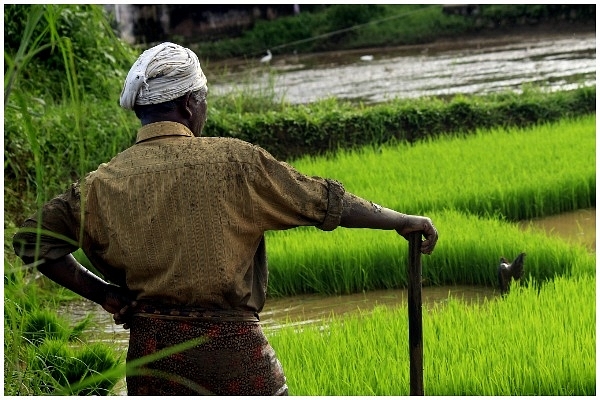
A Farmers’ Group Has Announced Large-Scale Sowing Of Unapproved GM Crops; Here’s All You Need To Know
On 8 June, Shetkari Sanghatana — a farmers’ union founded by the late leader Sharad Joshi — announced that in the current kharif season, farmers across Maharashtra would undertake mass sowing of genetically modified (GM) crops that haven’t been approved by the government.
The farmers will also put up boards on their fields proclaiming that they have used GM seeds. A similar agitation was carried out last year too.
Under the Environmental Protection Act ,1989, the usage of the unapproved GM variant can attract a jail term of 5 years and fine of Rs one lakh.
Why are farmers rooting for GM crops?
Humans have actively altered the genetic make-up of plants for thousands of years through domestication.
However, GM crops are those plants whose DNA has been has been modified using genetic engineering methods for adding or enhancing desired traits like:
- increased crop yield
- drought/flood resilience
- resistance to chemicals like herbicides
- insect and disease resistance
- reduction of spoilage
- improving the nutrient profile
For example, DMH-11, a GM mustard variety developed by a team of scientists at the Delhi University increases the yield by 25-30 per cent.
Golden Rice is a genetically modified rice with beta carotene, a precursor of Vitamin A. The variety can decrease the death and diseases caused by Vitamin A deficiency in the poverty-stricken regions.
Transgenic GM crops involve insertion of genes from another species, for example, DMH-11 contains ‘Barnase’ gene from bacterium Bacillus amyloliquefaciens. Bt Cotton contains genes from bacterium Bacillus thuringiensis that is insecticidal to the larvae of moths and butterflies, beetles, cotton bollworms etc.
Cisgenic GM plants are made using genes of the same species or a closely related one, where conventional plant breeding can occur. For example, a hybrid of a wild variety of cabbage with a domesticated one.
Genetic modification can also involve a simple removal of genes without any addition. For example, removal of genes that repress defenses against powdery mildew to produce a strain of wheat that is resistant to the disease. These are subgenic GM plants.
Farmers root for the GM crops because of the desirable traits. Ht Bt cotton reduces the high cost of weeding as they can use glyphosate against the weeds. Bt brinjal reduces the cost of production by cutting down on the use of pesticides.
Genetically modified plant varieties can also be used to produce drugs, biofuel, and in bioremediation.
If GM varieties are superior, where is the problem?
The opposition to GM crops comes from environmental groups as well as the proponents of traditional agricultural practices.
The argument is that the GM varieties can wipe out the native or naturally occurring varieties. Also, the GM variety can give rise to potentially harmful plant species through "gene escape". For example, a herbicide-resistant rice crop that crossbreeds with a weedy relative gives the weed a competitive advantage. So, there is a threat of ecosystem damage.
The greatest challenge to GM crops comes from the perspective of food safety. While till date no ill-effects of GM foods on human health have been recorded, the common people are somewhat repulsed by the thought eating a plant whose genetic make-up contains something from a bacteria. It seems unnatural to them.
Groups like Greenpeace claim that risks related to GM food have not been adequately examined and that GM crops are not sufficiently tested.
There is also the question of unpredictability regarding how an artificial genetic change in the plant may turn out in the longer run. The insert gene could mutate and destabilise the organism. The modification could accidentally switch on the "Sleeper" genes or active genes could become "silent".
The impact of the modified gene on other organisms is also unknown, for example, the horizontal flow of GM pollen to bees' gut or of novel gene sequences in plants to fungi and soil and rumen bacteria.
For developing countries, the issue of GMOs is further confounded by socio-economic considerations.
Most of the research on GMOs is capital intensive and is being carried out by big multi-national corporations like Monsanto which throw tantrums when they don’t get the desired government protection.
In 2016, Monsanto threatened to leave India after a show cause notice by the government for revoking patent on one variant of genetically modified BT Cotton after farmers complained that the crop had shown declining resistance against bollworm.
Monsanto could make such a threat because over 90 per cent of cotton grown in India uses Monsanto’s technology.
Last year, Pepsico filed cases against the Gujarat farmers for “illegally” growing its registered potato variety used to make Lay's chips.
The GMOs also come at a cost of farmers' access to the plant material. Farmers may be barred from using plant varieties bred from genetic material that originally came from their own fields by the companies holding patents on specific genetic modification "events".
And over and above these come the secondary issues of an effective, independent and transparent regulatory structure.